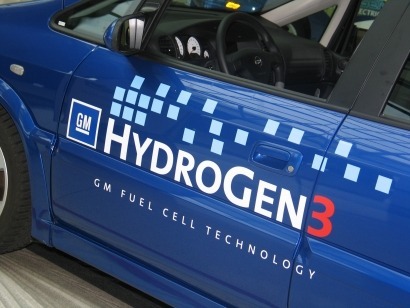
A team of researchers from the University of Colorado at Boulder (CU-Boulder) has developed a radical new technique for producing hydrogen fuel. The procedure involves using sunlight to split water into its constituent hydrogen and oxygen components. It would involve a solar thermal system in which sunlight is concentrated by a vast array of mirrors into a single point focused on top of a tower up to several hundred feet in height. The heat gathered by the tower would be delivered to a reactor containing metal oxides which, as their temperature increased, would release oxygen atoms. In turn these would seek out other oxygen atoms. Steam introduced into the system, produced by boiling water in the reactor, would casue oxygen from the water molecules to adhere to the surface of the metal oxide, freeing up the hydrogen molecules for collection as hydrogen gas.
“We have designed something here that is very different from other methods and frankly something that nobody thought was possible before,” said Professor Weimer of the chemical and biological engineering department at Boulder. “Splitting water with sunlight is the Holy Grail of a sustainable hydrogen economy.”
According to Associate Professor Charles Musgrave, one of the key differences between this technique and other methods is the ability to conduct two chemical reactions at the same temperature. Despite the lack of working models, conventional theory holds that it should be possible to produce hydrogen through the metal oxide process by heating the reactor to a high temperature in order to remove the oxygen, then cooling it to a low temperature before injecting steam to re-oxidise the compound. This would then release the hydrogen gas for collection. However, the new technique negates the need for a swing in temperature by using concentrated sunlight to drive the reaction.
The CU-Boulder method makes the amount of hydrogen produced for fuel cells dependent on the amount of metal oxide, a combination of iron, cobalt, aluminium and oxygen. It also depends on the amount of steam introduced into the system. The team has produced a range of designs, one of which encompasses reactor tubes of around a foot in diameter and several feet long filled with metal oxide and stacked on top of each other. A working design would depend on several acres of mirrors surrounding each tower in order to gather enough sunlight.
Professor Weimer argues that it would be years before any such system was commercialized, particularly now that the price of natural gas has fallen as there is no longer any incentive within the US to burn clean energy. He believes that there would either have to be a substantial monetary penalty for putting carbon into the atmosphere, or the price of fossil fuels would have to soar.
Further information:

